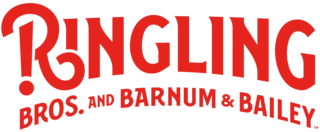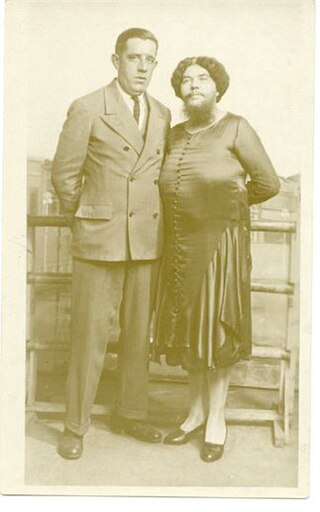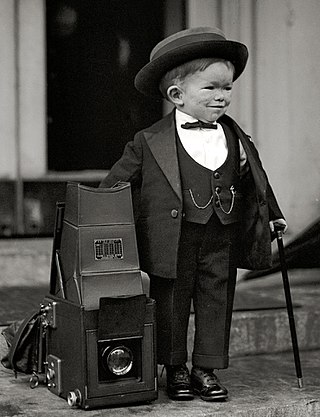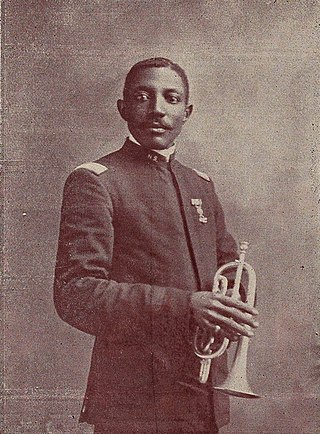
The Fiji mermaid was an object composed of the torso and head of a juvenile monkey sewn to the back half of a fish. It was a common feature of sideshows where it was presented as the mummified body of a creature that was supposedly half mammal and half fish, a version of a mermaid. The original had fish scales with animal hair superimposed on its body and pendulous breasts on its chest. The mouth was wide open with its teeth bared. The right hand was against the right cheek, and the left tucked under its lower left jaw. This mermaid was supposedly caught near the Fiji Islands in the South Pacific. Several replicas and variations have also been made and exhibited under similar names and pretexts. P. T. Barnum exhibited the original in Barnum's American Museum in New York in 1842, but it then disappeared—likely destroyed in one of the many fires that destroyed parts of Barnum's collections.

The Ringling Bros. and Barnum & Bailey Circus is an American traveling circus company billed as The Greatest Show on Earth. It and its predecessor have run shows from 1871, with a hiatus from 2017 to 2023. They operate as Ringling Bros. and Barnum & Bailey. The circus started in 1919 when the Barnum & Bailey's Greatest Show on Earth, a circus created by P. T. Barnum and James Anthony Bailey, was merged with the Ringling Bros. World's Greatest Shows. The Ringling brothers had purchased Barnum & Bailey Ltd. in 1907 following Bailey's death in 1906, but ran the circuses separately until they were merged in 1919.

Ringling Bros. World's Greatest Shows is a circus founded in Baraboo, Wisconsin, United States in 1884 by five of the seven Ringling brothers: Albert, August, Otto, Alfred T., Charles, John, and Henry. The Ringling brothers were sons of a German immigrant, August Frederick Rüngeling, who changed his name to Ringling once he settled in America. Four brothers were born in McGregor, Iowa: Alf T., Charles, John and Henry. The Ringling family lived in McGregor, Iowa, for twelve years, from 1860 until 1872. The family then lived in Prairie du Chien, Wisconsin, and moved to Baraboo, Wisconsin, in 1875. In 1907 Ringling Bros. acquired the Barnum & Bailey Circus, merging them in 1919 to become Ringling Bros. and Barnum & Bailey Circus, promoted as The Greatest Show on Earth. Ringling Bros. and Barnum & Bailey closed on May 21, 2017, following weakening attendance and high operating costs.

Jane Barnell was an American bearded lady who worked in circus sideshows, dime museums and carnivals, who used various stage names including Princess Olga, Madame Olga and Lady Olga. In her only film role in Tod Browning's cult classic Freaks, using the sideshow stage name Olga Roderick, she was billed as the "Bearded Lady".
Ringling Bros. and Barnum & Bailey Clown College trained around 1,400 clowns in the "Ringling style" from its 1968 founding until its 1997 closure.

Horace Leonard Ridler was a professional freak show and sideshow performer, exhibited for his heavy tattoos under the stage names The Great Omi and The Zebra Man.

Jóhann Kristinn Pétursson, also known as the Icelandic Giant and the Viking Giant, was an Icelandic circus performer and actor who at his peak measured 2.34 metres in height and weighed 163 kilograms (359 lb).

The Sells Floto Circus was a combination of the Floto Dog & Pony Show and the Sells Brothers Circus that toured with sideshow acts in the United States and Canada during the early 1900s.

Schlitzie, possibly born Simon Metz and legally Schlitze Surtees, was an American sideshow performer. He also appeared in a few films, and is best known for his role in the 1932 movie Freaks. His lifelong career on the outdoor entertainment circuit as a major sideshow attraction with Barnum & Bailey, among others, made him a popular cultural icon.

The American Circus Corporation consisted of the Sells-Floto Circus, the Hagenbeck-Wallace Circus, the John Robinson Circus, the Sparks Circus, and the Al G. Barnes Circus. It was owned by Jerry Mugivan, Bert Bowers and Ed Ballard. They sold the company in 1929 to John Nicholas Ringling for $1.7 million. With that acquisition, Ringling owned virtually every traveling circus in America.

Al G. Barnes Circus was an American circus run by Alpheus George Barnes Stonehouse that operated from 1898 to 1938.

Charles B. Tripp (1855-1930) was an artist and sideshow performer.

Todd Robbins is an American magician, lecturer, actor, and author.

A freak show is an exhibition of biological rarities, referred to in popular culture as "freaks of nature". Typical features would be physically unusual humans, such as those uncommonly large or small, those with intersex variations, those with extraordinary diseases and conditions, and others with performances expected to be shocking to viewers. Heavily tattooed or pierced people have sometimes been seen in freak shows, as have attention-getting physical performers such as fire-eating and sword-swallowing acts.

Harry Lewiston was an American showman, freak show director, and barker. He wrote his memoirs under his stage name, published posthumously in 1968 as Freak Show Man: the Autobiography of Harry Lewiston, as told to Jerry Holtman.

Leopold von Singer was an Austrian-born American manager of an entertainment troupe called Singer's Midgets, that were a popular vaudeville group in the first half of the twentieth century. He was responsible for casting many performers in the iconic 1939 film The Wizard of Oz.

Clarence Chesterfield Howerton, also known as Major Mite, was an American circus performer who starred in the sideshow for over 25 years, 20 of which were with the Ringling Bros. and Barnum & Bailey Circus. He was 2 ft 4 in (0.71 m) tall and performed with several groups from the early 1920s through the late 1940s, billed as the smallest man in the world. His small physique was often contrasted alongside larger circus sideshow acts, such as the juvenile obese and the excessively tall.
Melvin Burkhart (1907–2001) was a sideshow performer known as the Human Blockhead for driving a large steel spike up his nose with a hammer. He was also known as Melvin the Two-Faced Man, due to his ability to wear different facial expressions on the two sides of his face, and as Melvin the Anatomical Wonder for his abilities as a contortionist. His act also included magic, sword swallowing, fire eating, and an electric chair.

Perry George Lowery was an American composer, conductor, cornet player, and a circus sideshow manager of African American entertainment and musical ensembles.

Zachary "Skeeter" Reece is an American clown. He became a clown after serving in the Vietnam War.

















